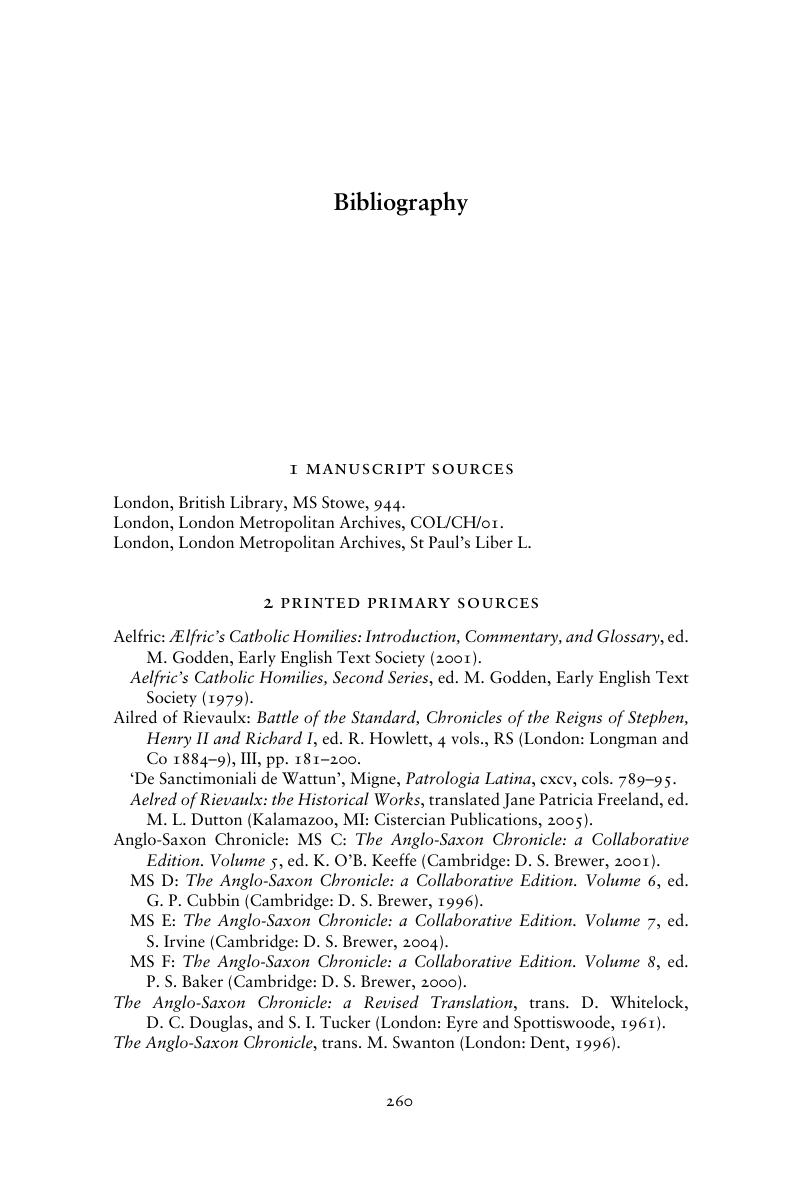Book contents
- Forging the Kingdom
- Forging the Kingdom
- Copyright page
- Contents
- Acknowledgements
- Abbreviations
- 1 Introduction
- 2 Contexts
- 3 Kings
- 4 Lay Lords: an Age of Aristocracy?
- 5 Archbishops, Bishops, and Abbots
- 6 Individuals, Communities, and Networks
- 7 Power and Place
- 8 London: the Making of a Capital City
- 9 A Patchwork Kingdom
- 10 Conclusion
- Bibliography
- Index
- References
Bibliography
Published online by Cambridge University Press: 25 May 2017
- Forging the Kingdom
- Forging the Kingdom
- Copyright page
- Contents
- Acknowledgements
- Abbreviations
- 1 Introduction
- 2 Contexts
- 3 Kings
- 4 Lay Lords: an Age of Aristocracy?
- 5 Archbishops, Bishops, and Abbots
- 6 Individuals, Communities, and Networks
- 7 Power and Place
- 8 London: the Making of a Capital City
- 9 A Patchwork Kingdom
- 10 Conclusion
- Bibliography
- Index
- References
Summary

- Type
- Chapter
- Information
- Forging the KingdomPower in English Society, 973–1189, pp. 260 - 294Publisher: Cambridge University PressPrint publication year: 2017



